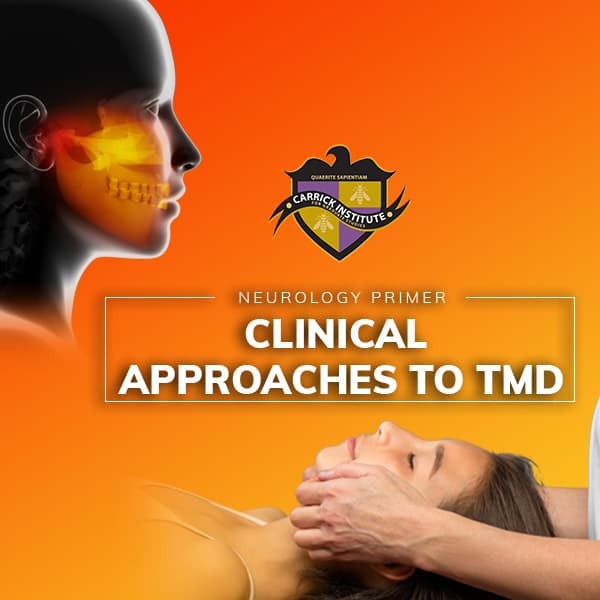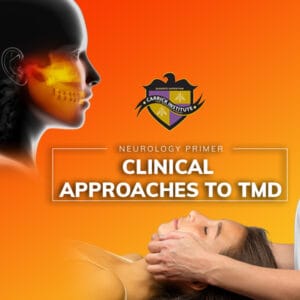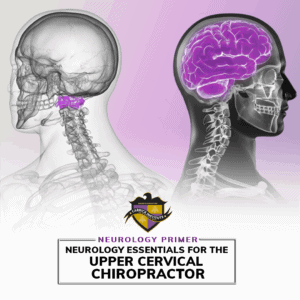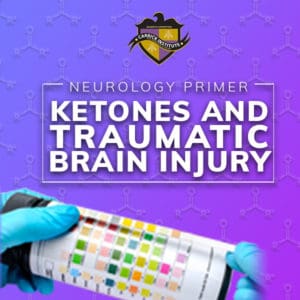 Neurology Primer: Clinical Approaches to TMD
Neurology Primer: Clinical Approaches to TMD
This full-day will be based upon on a focused head and neck examination, with a special overview on the TMJ, and its management procedures. The speaker will take your through the steps in this evidence-based physical examination process, which includes inspection, palpation, and auscultation of head and neck structures. Postural and gait analysis is the foundational start of assessing this condition. Special exam processes and testing will be shown to diagnosis common TMJ dysfunction such as synovitis, capsulitis, and myofascial pain syndromes. The use of a TMJ range of motion scale, anterior deprogrammers, cotton rolls, “spray and stretch” technique, and tongue depressors will be used to help through this diagnosis. Demonstration of myofascial release techniques using ones hands and instruments will be shown. A special focus on treating the muscles of mastication, intra-orally and extra-orally, will be addressed. Attendees will learn how chronic poor posture has been shown to be a perpetrator in TMD, and rehabilitation exercises and techniques will be demonstrated.
Course Objectives
- Discuss the prevalence and etiology of temporomandibular joint dysfunction (TMD)
- Define the anatomy of the TMJ and surrounding facial structures.
- Recognize the three most common causes of temporomandibular joint dysfunction (TMD) seen within the chiropractic practice.
- Learn the various types of pain referral sources to the temporomandibular joint (TMJ).
- Compare and contrast TMJ synovitis and capsulitis
- Distinguish the difference between anterior disc displacements with and without reduction
- Understand standard imaging processes ordered for specific TMJ conditions.
- Review and discuss common pathologies associated with TMD and their common care management strategies.
- Physical Examination – Evaluate the TMJ using physical examination procedures such as inspection, AROM, PROM, palpation, etc.
- Learn specific myofascial techniques for the muscles of mastication
- Outline various conservative management options for temporomandibular disorders.
- Construct a treatment plan for a typical patient with temporomandibular dysfunction
- Define the co-management care of a dental professional with patients presenting temporomandibular joint dysfunction.
- List and identify conditions that require immediate referral of care services with regards to TMD.
- Gait and its relationship to TMD – Explain how ambulation difficulties can potentially create issues throughout the kinetic chain.
- Gait and Posture Analysis – Define gait, cadence, stride length, and the research surrounding the use of orthotic devices to aid in patient
- Describe and demonstrate how a postural analysis and gait scan is vital to every condition that is assessed in the office.
- Explain how orthotics can be customized to help from the ground reactive forces upwards.
 Neurology Primer: Clinical Approaches to TMD
This full-day will be based upon on a focused head and neck examination, with a special overview on the TMJ, and its management procedures. The speaker will take your through the steps in this evidence-based physical examination process, which includes inspection, palpation, and auscultation of head and neck structures. Postural and gait analysis is the foundational start of assessing this condition. Special exam processes and testing will be shown to diagnosis common TMJ dysfunction such as synovitis, capsulitis, and myofascial pain syndromes. The use of a TMJ range of motion scale, anterior deprogrammers, cotton rolls, “spray and stretch” technique, and tongue depressors will be used to help through this diagnosis. Demonstration of myofascial release techniques using ones hands and instruments will be shown. A special focus on treating the muscles of mastication, intra-orally and extra-orally, will be addressed. Attendees will learn how chronic poor posture has been shown to be a perpetrator in TMD, and rehabilitation exercises and techniques will be demonstrated.
Course Objectives
Neurology Primer: Clinical Approaches to TMD
This full-day will be based upon on a focused head and neck examination, with a special overview on the TMJ, and its management procedures. The speaker will take your through the steps in this evidence-based physical examination process, which includes inspection, palpation, and auscultation of head and neck structures. Postural and gait analysis is the foundational start of assessing this condition. Special exam processes and testing will be shown to diagnosis common TMJ dysfunction such as synovitis, capsulitis, and myofascial pain syndromes. The use of a TMJ range of motion scale, anterior deprogrammers, cotton rolls, “spray and stretch” technique, and tongue depressors will be used to help through this diagnosis. Demonstration of myofascial release techniques using ones hands and instruments will be shown. A special focus on treating the muscles of mastication, intra-orally and extra-orally, will be addressed. Attendees will learn how chronic poor posture has been shown to be a perpetrator in TMD, and rehabilitation exercises and techniques will be demonstrated.
Course Objectives








